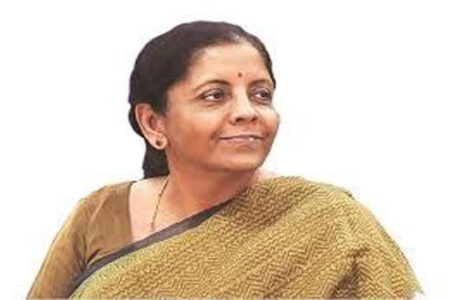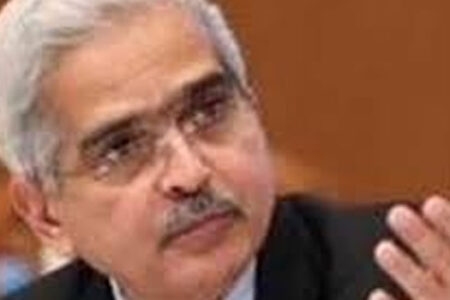If your neighbour is a banker, you would have seen him walking in the park with a spring in his step. The banker community is all smiles these days. The industry has not had it this good in ages.
Led by India’s largest lender, the State Bank of India, public sector banks (PSBs) have recorded a net profit of Rs17,132 crore in the September quarter – the highest ever. Add to this, the earnings of the listed private banks. The net profit of the industry, at Rs36,768 crore, is also a record high.
Since the December 2015 quarter, when the Reserve Bank of India (RBI) initiated the asset quality review of banks to clean up their balance sheets, this has been the best quarter both for PSBs and private banks. There is another reason to look at the earnings of banks since December 2015. Two new private banks made their appearance in 2015 –Bandhan Bank Ltd and IDFC Bank Ltd (now IDFC First Bank Ltd). Since then, there has been no change in the list of banks (barring the merger of a very small private bank with a foreign one) and hence the figures for the last six years are comparable.
The pack of private banks has made a net loss at least in one quarter, while PSBs, as a group, have posted net losses in as many as 11 quarters since December 2015. The industry has made net losses five times, the highest being Rs41,630 crore in March 2018 when the PSBs’ loss was a staggering Rs44,010 crore.
In the September quarter, all PSBs have made net profits, the way they did in the June quarter. Among private banks, there are two exceptions: South Indian Bank Ltd has made a net loss of Rs187 crore; and Bandhan Bank Ltd, Rs3,008 crore. Overall, PSBs’ net profit jumped close to 94 per cent in contrast to just a shed over 4 per cent rise in private banks’ profits.
What led to this spectacular rise in PSB profits?
The net interest income (NII), or the difference between the interest income a bank earns from its lending activities and the interest it pays to depositors, rose only 2.33 per cent for PSBs and 10.64 per cent for private banks. The growth in other income, or income from treasury, fees and recovery of written off loans, has gone up in September but that doesn’t justify the jump in net profits. For the private banks, the rise in other income has been around 19 per cent; for the PSBs, 22.63 per cent.
There is no uniformity in the rise of NII and other income among all banks – as credit growth and recovery of written off loans are uneven. For instance, IDFC First Bank’s NII rose over 25 per cent and that of ICICI Bank Ltd, close to 25 per cent. In the PSB pack, Punjab National Bank’s (PNB’s) NII dropped almost 25 per cent and that of Bank of India over 14 per cent. State Bank’s NII rose 10.65 per cent and HDFC Bank Ltd’s over 12 per cent.
IDFC First Bank’s credit growth has been 13.65 per cent and that of ICICI Bank 17.21 per cent. In contrast, PNB and Bank of India’s credit growth has been a little over 2.5 per cent each. State Bank’s credit growth has been over 6 per cent and HDFC Bank’s close to 15.5 per cent. Bank of Maharashtra has shown the maximum credit growth among PSBs (11.44 per cent) and the maximum growth in NIIs among all banks (close to 34 per cent).
When both the NII and other income have not shown significant growth, how has net profit zoomed? It’s elementary, my dear readers. Look at their operating profits and you’ll know. Quite a few banks have shown a drop in operating profits. Overall, private banks’ operating profits have grown 5.9 per cent but PSBs recorded a drop of over 8 per cent in operating profits.
The key driver of the profit growth is a sharp drop in provisions and contingencies. PSBs have recorded a 41 per cent drop in provisions and contingencies, while private banks’ provisions and contingencies have increased around 9 per cent. Overall, at Rs39,970 crore, provisions have been the lowest for the industry since the June 2017 quarter when they were Rs37,181 crore. The highest provisions and contingencies were made in March 2018 – Rs1,23,125 crore. In that quarter, the industry made a loss of Rs41,630 crore.
Bandhan Bank has made the maximum provisions (Rs5,573 crore), followed by HDFC Bank (Rs3,925 crore), Union Bank (Rs3,724 crore), Canara Bank (Rs3,360 crore) and PNB (Rs3,261 crore).
Most banks could afford to set aside less money for their bad loans since the pile of bad loans has started shrinking, fresh slippages have been arrested and provision has been made for a bulk of the bad loans. The provision coverage ratio, or the money set aside for bad loans, is at least 80 per cent for all PSBs. For UCO Bank, Bank of Maharashtra and Indian Overseas Bank, it’s more than 90 per cent. State Bank’s provision coverage ratio is close to 88 per cent. Among private banks, IDBI Bank’s provision coverage ratio is over 97 per cent.
Almost every bank has been able to bring down both the gross and net non-performing assets (NPAs) in the September quarter. Bandhan Bank is an exception. Its gross NPAs have grown to 10.82 per cent from 1.18 per cent in the year-ago quarter. IDBI Bank continues to have maximum gross NPAs (20.92 per cent) but after provisioning, its net NPAs are just 1.62 per cent. Both HDFC Bank and ICICI Bank have less than 1 per cent net NPAs each.
Among PSBs, State Bank has the lowest gross NPAs (4.9 per cent) and Central Bank of India, the highest (15.52 per cent). After provisioning, State Bank has the lowest net NPAs (1.52 per cent) and PNB, the highest (5.49 per cent).
Is the worst over for Indian banks? Are the September quarter earnings too good to be true?
Bankers are seeing better days ahead with expectations of a pickup in credit growth in the next few quarters with corporate India readying to invest. We need to wait and watch. The RBI feels that some banks have been upgrading bad accounts to good on payment of only interest overdues and/or partial overdues. A bad loan can get the “standard” asset tag only if the borrower pays the entire arrears of interest and principal. Let’s hope that instances of such upgrades are not rampant.



